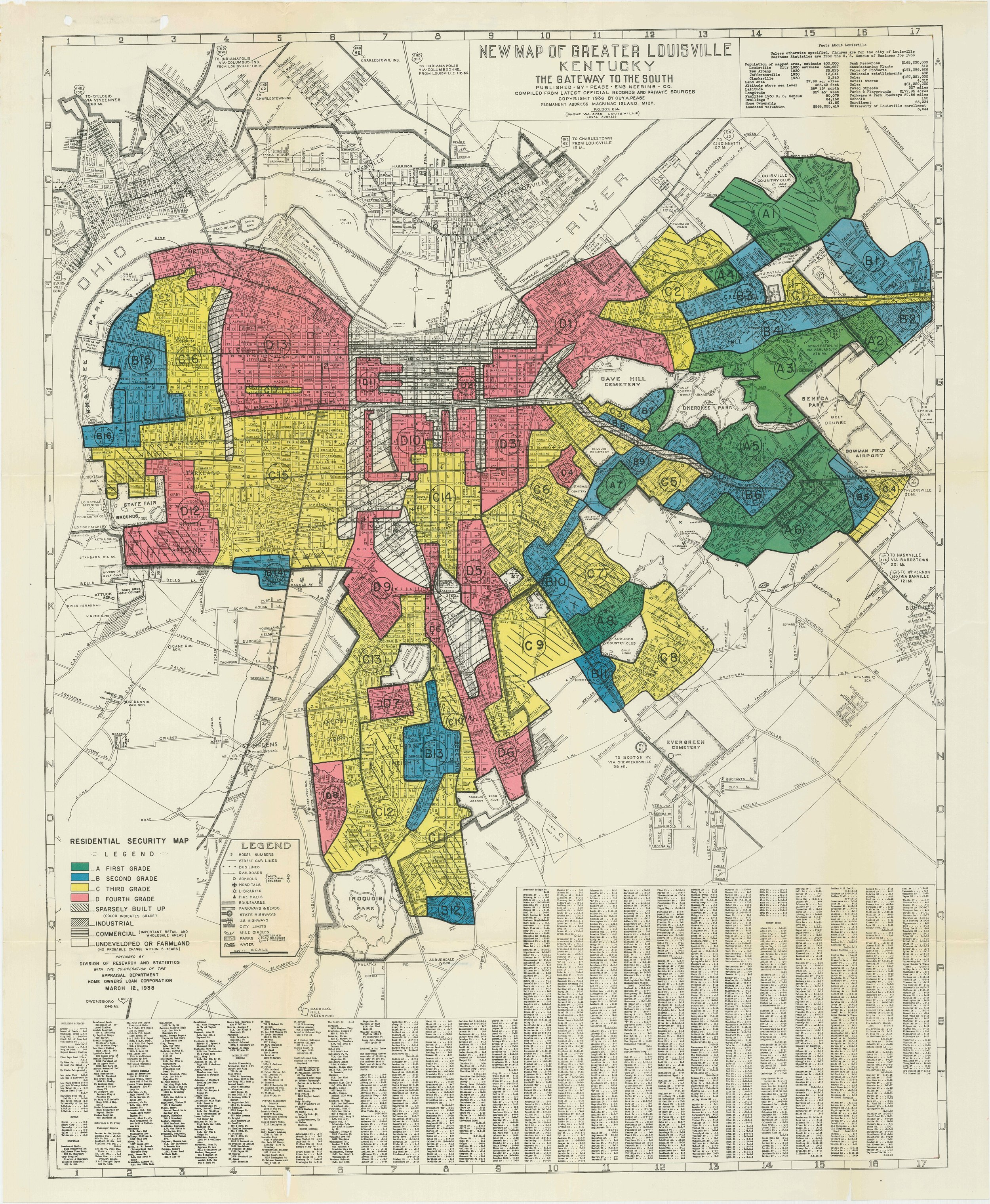Common Wealth - 9th St. Divide
In 1915, a legal challenge in Louisville, Kentucky, laid the groundwork for a landmark decision in the history of American civil rights and urban policy. Charles Buchanan, a white property owner, attempted to sell his home in a predominantly white neighborhood to William Warley, a Black attorney and representative of the NAACP. The sale was contingent upon Warley's legal right to occupy the property; however, a city ordinance prohibited Black individuals from residing in majority-white areas. Warley, citing the ordinance, declined to finalize the purchase, prompting Buchanan to sue on the grounds that the restriction infringed upon his rights under the Fourteenth Amendment.
In Buchanan v. Warley (1917), the United States Supreme Court unanimously struck down the ordinance. Writing for the Court, Justice William R. Day held that the law violated the constitutional protections of property rights and freedom of contract. While this decision invalidated explicit racial zoning laws, it did not dismantle the broader system of residential segregation. In the wake of Buchanan v. Warley, racially restrictive covenants—contractual clauses embedded in property deeds that barred sales to non-white individuals—proliferated. These private agreements proved highly effective in maintaining racial boundaries in American cities throughout much of the 20th century.
Louisville’s urban development, like that of many American cities, was shaped by a combination of legal, financial, and infrastructural mechanisms that sustained racial segregation well after the Buchanan decision. Among the most influential were redlining policies implemented in the 1930s by the Home Owners’ Loan Corporation (HOLC). In these federally commissioned maps, neighborhoods were graded based on perceived financial risk—often determined by the racial and ethnic composition of their residents. Predominantly Black neighborhoods were frequently designated as “hazardous” and marked in red, effectively excluding them from access to mortgage lending and investment. This practice institutionalized disinvestment and restricted generational wealth accumulation for African American communities.
Though redlining was officially outlawed in 1951, its spatial and economic consequences endured. Urban renewal efforts in Louisville further deepened racial inequities. Influential city planner Harland Bartholomew, commissioned in the late 1920s to draft Louisville’s first comprehensive urban plan, embedded segregationist principles into the city’s infrastructure. His 1929 publication, A Major Street Plan for Louisville, Kentucky, articulated strategies for traffic flow and land use that prioritized white neighborhoods and isolated Black communities. In the mid-20th century, these ideas took form in the demolition of thriving Black business corridors—most notably along Walnut Street (now Muhammad Ali Boulevard)—under the guise of modernization and slum clearance.
Federal housing policy also reinforced segregation. The 1936 edition of the Federal Housing Administration’s Underwriting Manual advised that “natural and artificial barriers”—such as highways or wide boulevards—could be used to separate residential zones from what it called “inharmonious uses,” a euphemism for communities of color. These guidelines were instrumental in shaping postwar development, codifying physical separation as a form of social control.
The construction of the interstate highway system, initiated under the 1956 Federal-Aid Highway Act, made these divisions literal. In Louisville, the routing of Interstate 64 (I-64), and specifically the creation of the 9th Street exit, bisected the urban core. This corridor emerged as a stark racial and economic boundary, physically separating the predominantly Black West End from the central business district. The construction not only displaced communities but entrenched longstanding patterns of segregation and disinvestment.
This legacy—rooted in legal precedent, planning policy, and infrastructural design—continues to shape the city’s urban geography. The built environment of Louisville stands as a material record of how race and space have been co-constructed in the American landscape.
TIMELINE OF KEY EVENTS
1917: Buchanan v. Warley, 245 U.S. 60
1920s: Harland Bartholomew is invited to Louisville to create the city’s first comprehensive plan.
1930s: Implementation of redlining practices by the HOLC, leading to systemic disinvestment in Black neighborhoods.
1951: Official end of redlining; however, its effects continue to influence housing and economic patterns.
1956: Federal-Aid Highway Act accelerates interstate construction, including I-64 in Louisville.
Late 1950s - 1960s: Harlan Bartholomew and Associate return to Louisville with an updated city plan. Urban renewal projects result in the demolition of significant Black business districts, notably along Walnut Street.
1960s: Completion of I-64 and the 9th Street exit, exacerbating the physical and economic divide between Louisville's West End and downtown.
Residential securities map
LINKS TO HISTORICAL DOCUMENTS
SOURCES
"Redlining Community Dialogue." LouisvilleKY.gov, https://louisvilleky.gov/government/redevelopment-strategies/redlining-community-dialogue.
"Dividing Lines: Redlining in Louisville." Louisville.com, https://www.louisville.com/redlining-louisville-dividing-lines.
"Redlining Louisville." LOJIC, https://www.lojic.org/redlining-louisville-news.
"Redlining Louisville Project: Early Lessons Learned." Federal Reserve Bank of St. Louis, https://www.stlouisfed.org/publications/bridges/summer-2017/redlining-louisville-project-lessons-learned.
"Louisville's History of Racial Oppression and Activism: Housing." University of Louisville Libraries, https://library.louisville.edu/archives/racial-logics/housing.
Buchanan v. Warley, 245 U.S. 60 (1917). Justia, https://supreme.justia.com/cases/federal/us/245/60/.
"Buchanan v. Warley." Oyez, www.oyez.org/cases/1900-1940/245us60.
"Buchanan v. Warley." Legal Information Institute, Cornell Law School, www.law.cornell.edu/supremecourt/text/245/60.
"1917: Buchanan v. Warley." Fair Housing Center of Greater Boston, www.bostonfairhousing.org/timeline/1917-Buchanan-v.Warley.html.






















